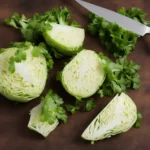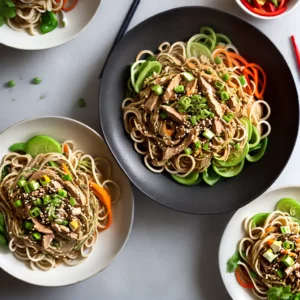How to Make Kimchi
Kimchi is a traditional Korean fermented cabbage dish that is not only delicious but also packed with probiotics and health benefits. Making kimchi at home is easy and can be done without fish sauce, making it suitable for vegetarians. The basic steps to making kimchi involve salting the cabbage, preparing a flavorful paste with ingredients like Korean pepper flakes, garlic, ginger, and sugar, mixing it all together with vegetables like radish and green onions, and fermenting it in a jar for 2 to 5 days. The longer you let it ferment, the more sour and less crunchy it will become. Kimchi can be enjoyed on its own as a side dish or used as a condiment or topping in various recipes.
How to Make Kimchi – Key Takeaways
- Kimchi is a traditional Korean fermented cabbage dish that is both tasty and healthy.
- Making kimchi at home is easy and can be customized to suit your taste preferences.
- Kimchi can be enjoyed on its own as a side dish or used to add flavor to other dishes.
- Fermenting kimchi for longer periods results in a more sour and tangy flavor.
- Kimchi is a great source of probiotics, which can benefit gut health.
The Art of Kimchi: A Flavorful Journey in Your Kitchen
Making kimchi at home is easy and can be done without fish sauce, making it suitable for vegetarians. Kimchi is a traditional Korean fermented cabbage dish that is not only delicious but also packed with probiotics and health benefits. It’s a versatile condiment that adds a tangy kick to any meal. In this section, I will guide you through the art of kimchi-making, from selecting the right ingredients to perfecting the fermentation process.
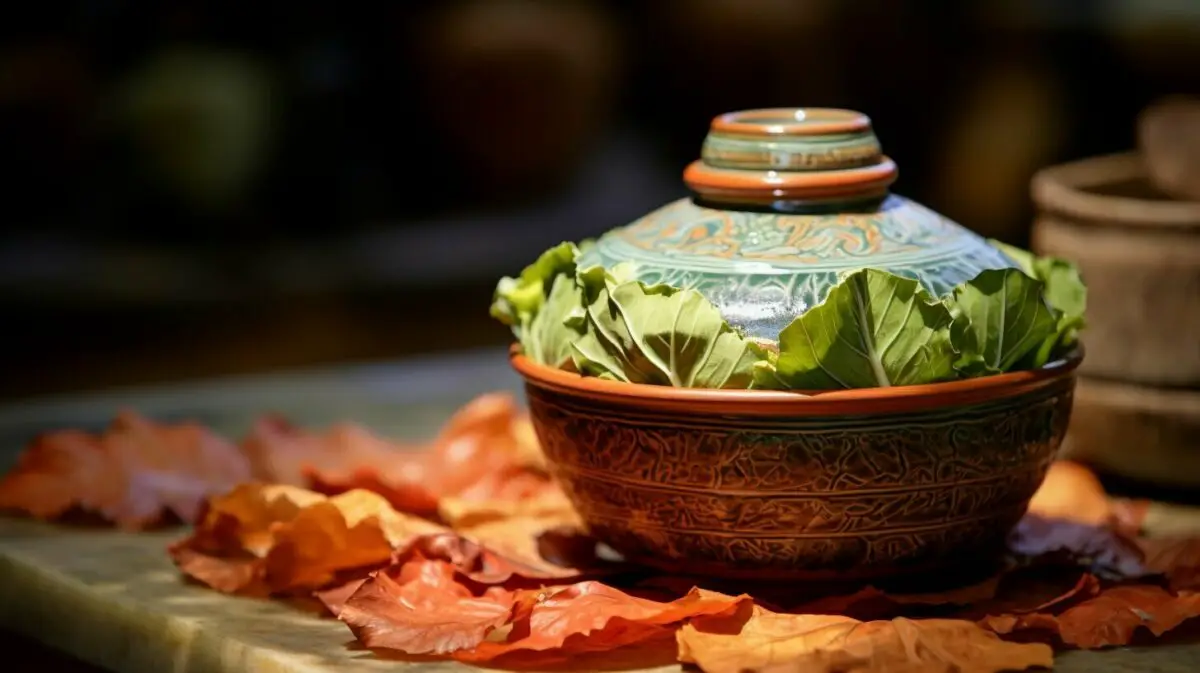
When it comes to kimchi, the key lies in finding the perfect balance of flavors. The ingredients you choose and the ratios you use play a crucial role in achieving that balance. Korean pepper flakes, known as gochugaru, give kimchi its signature spicy kick. Garlic, ginger, and sugar add depth and complexity to the flavor profile. Vegetables like radish and green onions provide an additional crunch and texture.
| Ingredients | Ratios |
|---|---|
| Korean pepper flakes (gochugaru) | 1 cup |
| Garlic cloves, minced | 8 |
| Ginger, grated | 2 tablespoons |
| Sugar | 2 tablespoons |
| Radish, julienne | 1 cup |
| Green onions, chopped | 1 cup |
Once you have gathered all your ingredients, it’s time to mix them together to create the kimchi paste. Massage the paste into the cabbage leaves, making sure to coat them thoroughly. This step is vital to ensure that every bite of kimchi is bursting with flavor. Afterward, transfer the cabbage and paste mixture into a fermentation vessel. Airtight jars or containers work well for this purpose. Let the kimchi ferment for 2 to 5 days, depending on your desired level of sourness. Remember to burp the jar occasionally to release any gas buildup.
Now that you’ve learned the essentials of kimchi-making, you’re ready to embark on your own flavorful journey in the kitchen. Experiment with different ingredients and ratios to create your unique kimchi masterpiece. In the next section, we will delve deeper into the essential ingredients that make up the base of homemade kimchi.
Essential Ingredients for Homemade Kimchi
The basic steps to making kimchi involve salting the cabbage, preparing a flavorful paste with ingredients like Korean pepper flakes, garlic, ginger, and sugar. These ingredients are what give kimchi its distinct taste and aroma.
Korean pepper flakes, also known as gochugaru, are a key ingredient in kimchi paste. They provide the spice and heat that kimchi is known for. You can adjust the amount of pepper flakes based on your preference for spiciness.
Garlic and ginger add depth and flavor to the kimchi. The cloves of garlic should be minced or finely chopped, while the ginger should be grated. These ingredients not only enhance the taste but also contribute to the health benefits of kimchi.
Sugar is used to balance the flavors and aid in the fermentation process. It is important to use a small amount of sugar to help feed the beneficial bacteria during fermentation. You can use regular granulated sugar or alternative sweeteners like honey or maple syrup.
In addition to these essential ingredients, you can also experiment with other spices and flavors to create unique variations of kimchi. Some popular additions include fish sauce, soy sauce, sesame oil, and seafood like shrimp or anchovies. Vegetarians can skip the fish sauce and still enjoy flavorful kimchi.
Remember, the key to making delicious kimchi is finding the right balance of flavors that suits your taste. Don’t be afraid to get creative and try different combinations until you discover your perfect kimchi recipe.
Table: Essential Ingredients for Homemade Kimchi
| Ingredient | Quantity |
|---|---|
| Korean pepper flakes (gochugaru) | 2 tablespoons |
| Garlic cloves | 4-6 cloves, minced |
| Ginger | 1-inch piece, grated |
| Sugar | 1 tablespoon |
| Salt | 1/4 cup |
Now that you have the essential ingredients, you’re ready to embark on your kimchi-making journey. In the next section, we’ll explore the art of fermentation and the steps you need to take to ensure your kimchi turns out perfectly tangy and delicious.
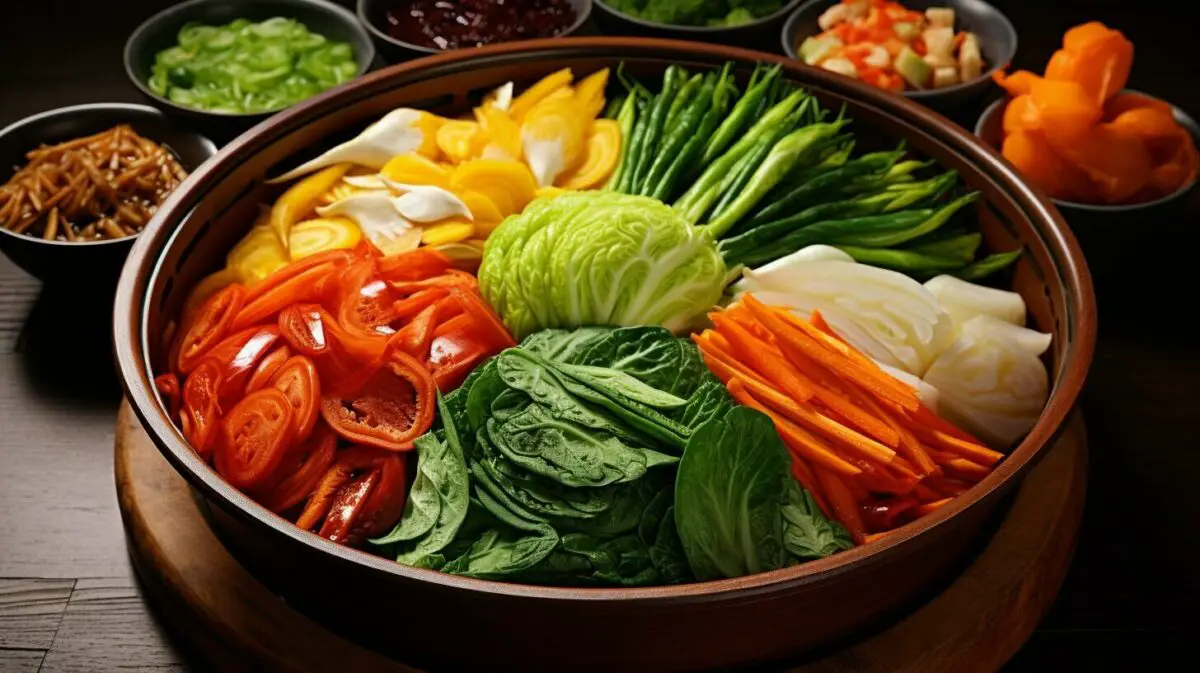
Once all the ingredients are mixed together, the kimchi is ready to be fermented in a jar for 2 to 5 days. The fermentation process is what gives kimchi its tangy flavor and allows the flavors to develop. Proper fermentation is essential to achieve the perfect balance of flavors and textures in your homemade kimchi.
To ensure successful fermentation, there are a few key factors to consider. The first is the fermentation vessel. It’s important to use a jar or container that can be sealed tightly to prevent air from entering and spoiling the kimchi. This will also help maintain the proper fermentation temperature.
The optimal fermentation temperature for kimchi is around 64 to 77 degrees Fahrenheit (18 to 25 degrees Celsius). Too warm of an environment can lead to fast fermentation, resulting in overly sour kimchi. On the other hand, if it’s too cold, the fermentation process may slow down or even halt. It’s important to find a spot in your home that maintains a consistent temperature within this range.
During the fermentation process, you may encounter some common issues. For example, if you notice mold forming on the surface of your kimchi, it’s best to discard it and start anew. Mold can indicate that the kimchi has been contaminated and is no longer safe to consume. To prevent mold, make sure the kimchi is submerged in its own brine and check for any signs of spoilage regularly.
Overall, patience is key when it comes to fermenting kimchi. The longer you allow it to ferment, the more complex the flavors will become. It’s a good idea to taste the kimchi throughout the fermentation process to monitor its progress and determine your preferred level of sourness. Once you’re satisfied with the taste, transfer the kimchi to the refrigerator to slow down the fermentation process and enjoy it at your leisure.
| Fermentation Tips: |
|---|
| Use a tightly sealed jar or container to prevent air from entering. |
| Ensure a consistent fermentation temperature of 64 to 77°F (18 to 25°C). |
| Check for mold or signs of spoilage regularly and discard if necessary. |
| Taste the kimchi throughout the fermentation process to determine your preferred level of sourness. |
| Transfer the kimchi to the refrigerator to slow down fermentation once desired flavor is achieved. |
Enjoying the Fruits of Your Labor: Perfectly Fermented Kimchi
The longer you let kimchi ferment, the more sour and less crunchy it will become. But that’s where the magic happens! The flavors develop and intensify, creating a tangy and delicious condiment that can be enjoyed in various ways.
As a side dish, kimchi adds a burst of flavor to any meal. Its spicy and complex taste complements a wide range of dishes, from grilled meats to steamed vegetables. You can also enjoy it as a topping on burgers, sandwiches, or tacos for an extra kick of flavor.
But kimchi doesn’t stop there! It can be used as an ingredient in many recipes, adding a unique twist to familiar dishes. Try adding kimchi to fried rice for a spicy and savory twist or incorporate it into pancakes for a flavorful breakfast option. The possibilities are endless!
Kimchi Recipes Ideas:
- Kimchi Fried Rice
- Kimchi Pancakes
- Kimchi Stew
- Kimchi Noodles
So, go ahead and explore the world of perfectly fermented kimchi. Get creative in the kitchen and discover new ways to enjoy this tangy and versatile dish. Whether you’re a kimchi enthusiast or a newbie, there’s no denying that kimchi is a flavor-packed ingredient that can elevate any meal.
| Kimchi Recipe | Uses |
|---|---|
| Kimchi Fried Rice | A flavorful twist on a classic dish |
| Kimchi Pancakes | Savory and delicious breakfast option |
| Kimchi Stew | Warm and comforting meal |
“Kimchi is a flavor-packed ingredient that can elevate any meal.”
So, grab a jar of your perfectly fermented kimchi and start exploring the endless possibilities. From side dishes to main courses, kimchi is a versatile ingredient that will add a tangy and spicy kick to your culinary creations. Enjoy the fruits of your labor and savor the deliciousness of homemade kimchi!
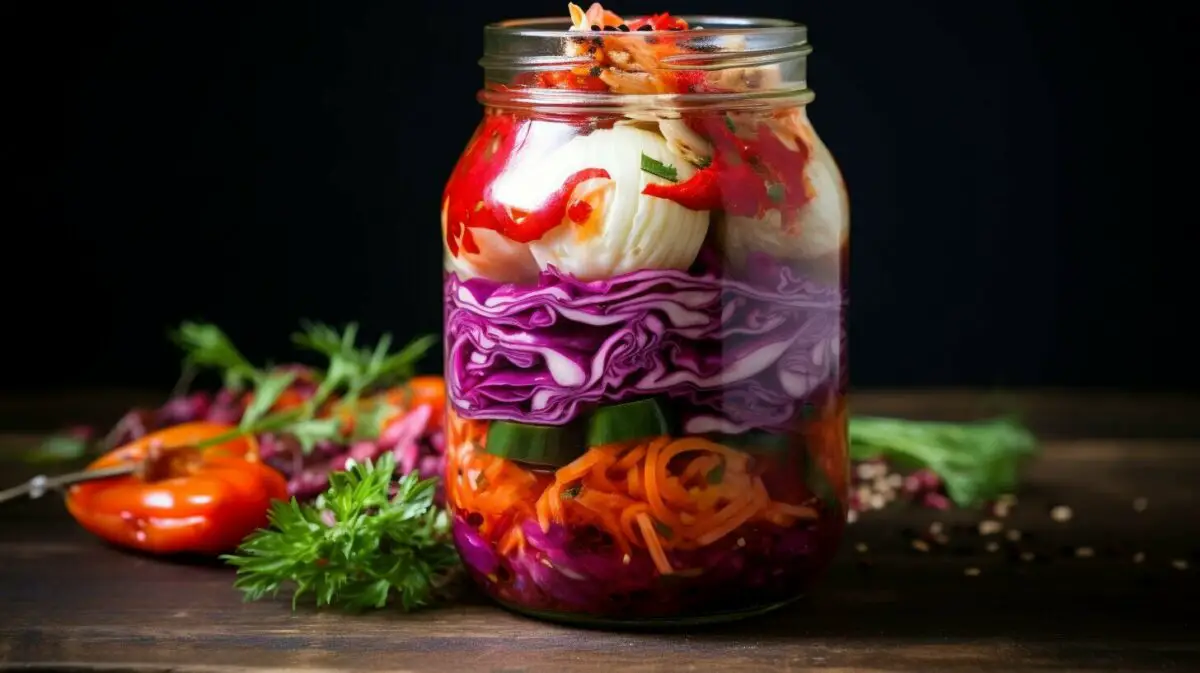
Kimchi can be enjoyed on its own as a side dish or used as a condiment or topping in various recipes. Its tangy and spicy flavors add a delightful kick to any dish, making it a versatile ingredient that can elevate your culinary creations. Let’s explore some exciting ways to incorporate kimchi into your meals!
1. Kimchi Sandwiches: Take your sandwich game to the next level by adding a generous layer of kimchi. The combination of savory fillings and the zesty crunch of kimchi creates a satisfying and flavorful meal option.
| Sandwich Ideas | Ingredients |
|---|---|
| Korean BBQ Kimchi Sandwich | Grilled marinated beef, kimchi, pickled vegetables, mayo |
| Spicy Tofu Kimchi Banh Mi | Crispy tofu, kimchi, pickled daikon and carrots, cilantro, sriracha mayo |
2. Kimchi Fried Rice: Transform leftover rice into a delicious and satisfying meal by stir-frying it with kimchi. The combination of tangy kimchi, savory rice, and other ingredients creates a flavorful one-pan dish that is easy to prepare.
“Kimchi fried rice is a staple in Korean cuisine. The combination of the fermented flavors of kimchi and the rich umami of fried rice creates a delicious and comforting dish.” – Chef Kim
3. Kimchi Pancakes: Crispy and savory, kimchi pancakes are a popular Korean appetizer. The combination of kimchi, flour, and other seasonings creates a delightful pancake that can be enjoyed on its own or paired with a dipping sauce.
- Basic Kimchi Pancake Recipe:
- Mix 1 cup of all-purpose flour, 1 cup of water, 1 beaten egg, 1 cup of chopped kimchi, and 2 tablespoons of kimchi brine.
- Heat oil in a frying pan and pour a ladle of the batter. Cook until both sides are golden brown and crispy.
- Serve with a soy dipping sauce or a spicy gochujang-based sauce.
4. Kimchi Soup and Stew: Warm up with a comforting bowl of kimchi soup or stew. The tangy and spicy flavors of kimchi add depth to broths, creating a flavorful and nourishing dish.
Kimchi Soup Recipe:
- Ingredients:
- 2 cups of vegetable or chicken broth
- 1 cup of chopped kimchi
- 1 tablespoon of gochujang (Korean chili paste)
- 1/2 cup of tofu, cubed
- 1 green onion, chopped
- 1 teaspoon of sesame oil (optional)
- Instructions:
- In a pot, bring the broth to a simmer.
- Add the kimchi, gochujang, tofu, and green onion. Simmer for 10 minutes.
- Drizzle with sesame oil before serving, if desired.
5. Kimchi Noodles: Upgrade your instant noodles by adding kimchi to create a quick and flavorful meal. The spicy and tangy kimchi complements the noodles, creating a delicious and satisfying dish.
6. Kimchi Burgers: Give your burgers a Korean twist by topping them with kimchi. The combination of the juicy patty, melted cheese, and the tangy crunch of kimchi creates a mouthwatering burger experience.

Kimchi offers a world of possibilities beyond cabbage. Its bold flavors and probiotic benefits can enhance a variety of dishes, from sandwiches to pancakes, soups, and more. Get creative in the kitchen and explore the versatile and delicious world of kimchi!
Kimchi Health Benefits: A Tangy Boost for Your Well-Being
In addition to its delicious flavors, kimchi is packed with probiotics, which provide numerous health benefits. Probiotics are live bacteria and yeasts that are beneficial for our gut health and overall well-being. These good bacteria help maintain a healthy balance in our digestive system and support our immune system.
One of the key health benefits of kimchi is its ability to improve digestion. The fermentation process produces lactic acid bacteria, which help break down food and enhance nutrient absorption. This can alleviate digestive issues such as bloating, constipation, and indigestion.
Furthermore, kimchi is known to boost the immune system. The presence of probiotics in kimchi stimulates the production of antibodies and enhances the activity of immune cells, strengthening our body’s defense against infections and diseases.
Research has also shown that consuming kimchi regularly may contribute to weight management. The probiotics in kimchi assist in regulating appetite and metabolism, promoting a healthy gut environment that can support weight loss and maintenance.
| Health Benefit | Description |
|---|---|
| Improved Digestion | The probiotics in kimchi aid in breaking down food and enhancing nutrient absorption, alleviating digestive issues. |
| Enhanced Immune System | The presence of probiotics in kimchi supports the production of antibodies and strengthens immunity against infections and diseases. |
| Weight Management | The probiotics in kimchi help regulate appetite and metabolism, promoting a healthy gut environment for weight loss and maintenance. |
It’s important to note that the health benefits of kimchi can vary depending on the fermentation process, ingredients used, and personal health conditions. If you have any specific health concerns or dietary restrictions, it’s best to consult with a healthcare professional before incorporating kimchi into your regular diet.

Now that you know about the health benefits of kimchi, why not try incorporating this tangy and flavorful dish into your diet? Whether enjoyed as a side dish, a condiment, or a delicious ingredient in various recipes, kimchi can add a unique and healthy twist to your meals.
- Pair it with rice or noodles for a satisfying and nutritious meal.
- Add it to sandwiches or wraps for an extra kick of flavor.
- Use it as a topping for tacos or burgers for a Korean-inspired twist.
With its versatility and health benefits, kimchi is truly a culinary delight that can contribute to your overall well-being.
Preserving and Storing Your Kimchi Creations
Proper preservation and storage are essential to keep your kimchi fresh and flavorful for an extended period. Once you’ve completed the fermentation process and achieved the perfect balance of flavors, it’s time to ensure that your kimchi stays delicious for as long as possible.
One of the traditional methods of preserving kimchi is by storing it in jars. Airtight glass jars with a secure lid are the ideal choice for maintaining the taste and texture of your kimchi. The glass material helps to retain the flavors without absorbing any unwanted odors or tastes from the surrounding environment.
When selecting kimchi jars, opt for ones that are specifically designed for long-term storage. These jars often have a rubber gasket or seal to create an airtight barrier, preventing air from entering and compromising the quality of your kimchi. Remember to clean and sterilize your jars before filling them with kimchi to ensure proper preservation.
| Container Type | Advantages | Disadvantages |
|---|---|---|
| Glass jars | Preserves flavors, airtight, does not absorb odors | May be heavy, limited visibility of contents |
| Plastic containers | Lightweight, easy to transport, clear visibility | Can absorb odors, may not be completely airtight |
If you prefer using plastic containers, ensure they are made from food-grade materials and have a tight-fitting lid. Look for containers that are labeled as airtight or specifically designed for fermented foods. Plastic containers are lightweight and convenient for transporting your kimchi but may not offer the same level of odor absorption prevention as glass jars.
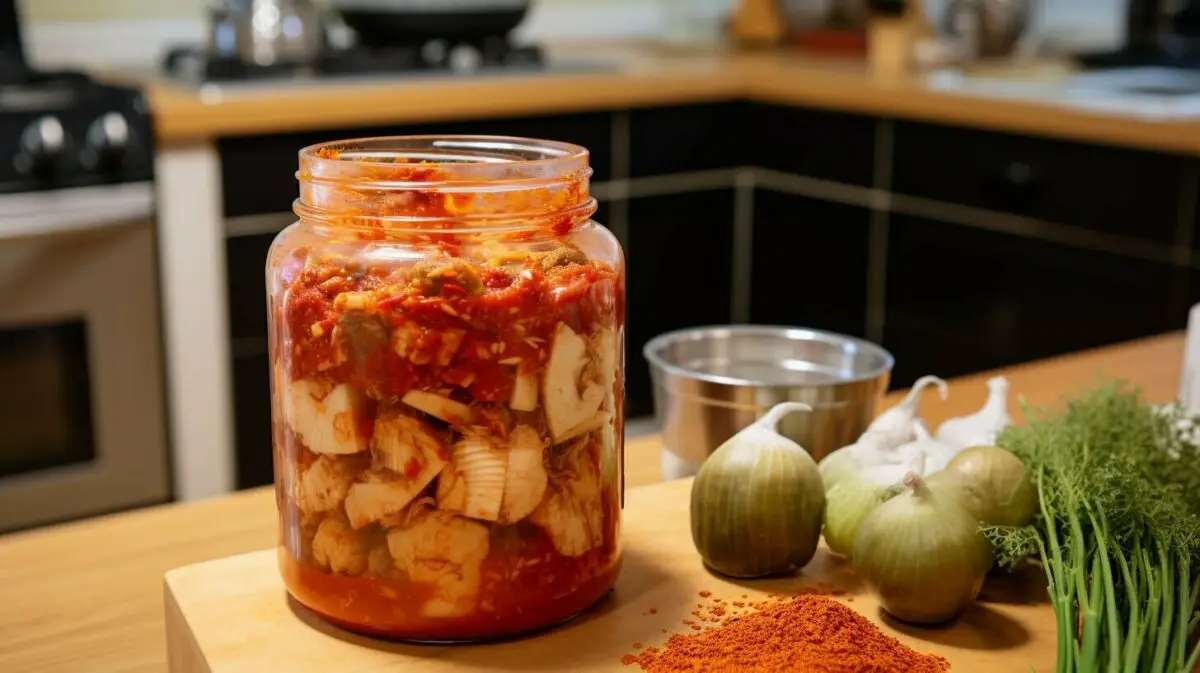
Once your kimchi is properly stored in either glass jars or plastic containers, it’s essential to refrigerate it. Refrigeration slows down the fermentation process, preserving the flavor and texture of your kimchi for a longer period. Keeping your kimchi refrigerated also helps to maintain its freshness and prevents any undesirable bacteria or yeasts from growing.
Remember to label and date your kimchi to keep track of its storage time. While kimchi can be enjoyed immediately after fermentation, it’s recommended to consume it within a month for the best flavor and quality. As time goes on, the flavors will continue to develop, and the kimchi may become less crunchy but more sour.
By following these preservation and storage techniques, you can enjoy your homemade kimchi for an extended period and savor its tangy, flavorful goodness in various meals and recipes.
How to Make Kimchi – Conclusion
Making kimchi at home is a fun and flavorful way to explore Korean cuisine and enjoy the delicious and probiotic-rich benefits of this traditional fermented dish. Kimchi, a traditional Korean fermented cabbage dish, is not only delicious but also packed with probiotics and health benefits. It can easily be made at home, and the best part is that it can be made vegetarian-friendly without the use of fish sauce.
The basic steps to making kimchi involve salting the cabbage, preparing a flavorful paste with ingredients like Korean pepper flakes, garlic, ginger, and sugar, mixing it all together with vegetables like radish and green onions, and fermenting it in a jar for 2 to 5 days. The longer you let it ferment, the more sour and less crunchy it will become.
Once your homemade kimchi is ready, you can enjoy it on its own as a delicious side dish or use it as a condiment or topping in various recipes. From adding a kick of flavor to sandwiches and fried rice to enhancing the taste of soups and stews, kimchi is a versatile ingredient that can elevate any dish.
So why not embark on your own kimchi-making journey right in your kitchen? With its tangy taste, numerous health benefits, and the joy of creating something homemade, kimchi is a culinary adventure worth exploring.
How to Make Kimchi – FAQ
Q: How do I make kimchi at home?
A: Making kimchi at home is easy! Simply follow the basic steps of salting the cabbage, preparing a flavorful paste, mixing it all together with vegetables, and fermenting it in a jar for 2 to 5 days.
Q: Can I make kimchi without fish sauce?
A: Absolutely! You can make kimchi without fish sauce, making it suitable for vegetarians. Simply omit the fish sauce from the recipe and adjust the other flavors to your liking.
Q: What are the health benefits of kimchi?
A: Kimchi is packed with probiotics, which can support digestion and boost your immune system. It’s also a good source of vitamins and minerals.
Q: How long does kimchi need to ferment?
A: Kimchi can be fermented for 2 to 5 days. The longer you let it ferment, the more sour and less crunchy it will become.
Q: How can I use kimchi in recipes?
A: Kimchi can be enjoyed on its own as a side dish or used as a condiment or topping in various recipes. It adds a flavorful kick to dishes like sandwiches, fried rice, pancakes, soups, stews, noodles, and even burgers.
Q: Does kimchi need to be refrigerated?
A: Yes, after making kimchi, it’s important to refrigerate it for proper storage and to maintain its freshness and flavor.
Q: What are the essential ingredients for homemade kimchi?
A: The essential ingredients for homemade kimchi include a spicy paste made with Korean pepper flakes, garlic, ginger, and sugar, as well as vegetables like cabbage, radish, and green onions.
Q: Are there different variations of kimchi?
A: Yes, while traditional kimchi is made with cabbage, there are many other delicious variations to explore. You can find kimchi in sandwiches, fried rice, pancakes, soups, stews, noodles, and even burgers.
Q: Can I preserve kimchi for long-term storage?
A: Yes, you can preserve kimchi for long-term storage by using jars or containers and refrigerating it. This will help maintain its freshness and flavor over time.




